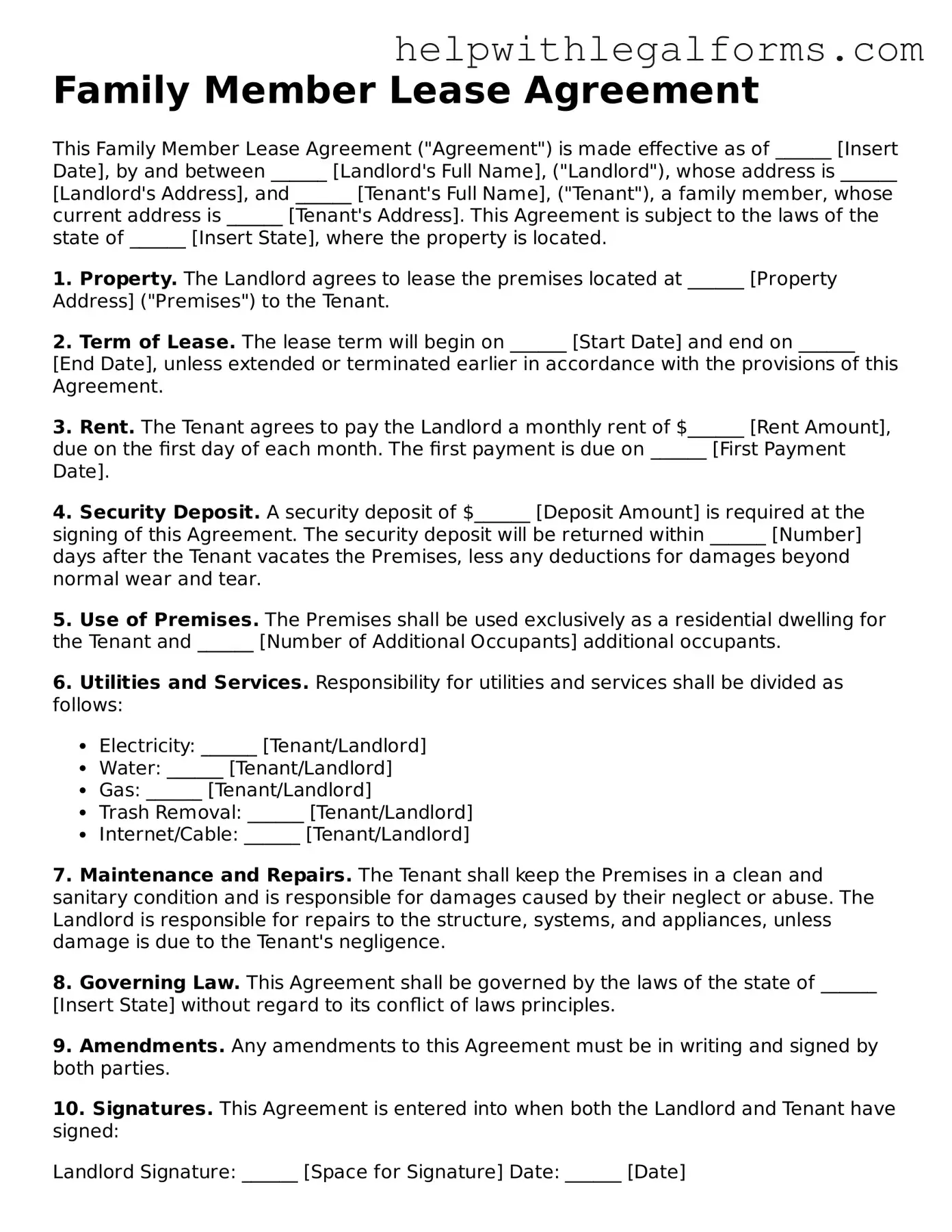What is a Family Member Lease Agreement?
A Family Member Lease Agreement is a formal document that outlines the terms and conditions under which one family member agrees to rent property to another family member. It serves to create a clear understanding of expectations on both sides and helps to prevent misunderstandings or conflicts.
Why should I use a Family Member Lease Agreement?
Using a Family Member Lease Agreement can help protect the rights and responsibilities of both the landlord and the tenant, even when they are relatives. It ensures that both parties understand their duties, such as payment schedules, property maintenance, and notice periods for termination, providing a level of professionalism and seriousness to the arrangement.
What should be included in a Family Member Lease Agreement?
The agreement should include identification of the parties involved, the rental property address, lease duration, rent amount and payment terms, security deposit information, specific use and property maintenance responsibilities, conditions for termination, and signatures from both parties. Clauses regarding guests, pets, and subletting may also be included.
Is a Family Member Lease Agreement legally binding?
Yes, a Family Member Lease Agreement, like any other lease agreement, is legally binding once both parties have signed it. This means both the landlord and the tenant must adhere to the terms set forth in the document or face legal consequences.
Can I evict a family member if they don't follow the lease agreement?
Yes, if a family member does not follow the terms laid out in the lease agreement, they can be evicted. However, the eviction process must follow state laws and regulations, and proper notice must be given. It's critical to document any violations of the agreement as part of this process.
How is rent determined in a Family Member Lease Agreement?
Rent can be determined by any agreement between the landlord and tenant family member, considering factors like market rates, the property's location and condition, and what is affordable for the tenant. The key is to have the rent amount clearly stated in the lease agreement to avoid any ambiguity or future disputes.
Can the lease agreement be modified?
Yes, the lease agreement can be modified if both parties agree to the changes. Any changes to the agreement should be made in writing, and both the landlord and tenant should sign the amended document to ensure that it is legally binding.
What happens if one party wants to terminate the lease early?
Termination clauses in the agreement should outline the process for early termination by either party. Common conditions may include a notice period (e.g., 30 days) and/or a penalty for early termination. These terms should be clearly stated to facilitate a mutual understanding.
Do I need a lawyer to create a Family Member Lease Agreement?
While you are not required to have a lawyer to create a Family Member Lease Agreement, consulting with a legal professional can ensure that the agreement complies with local laws and fully protects your interests. A lawyer can also help clarify any complex terms and conditions.
